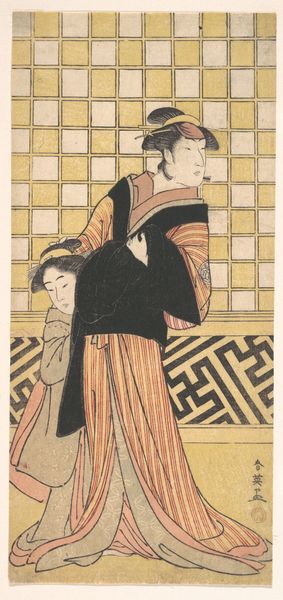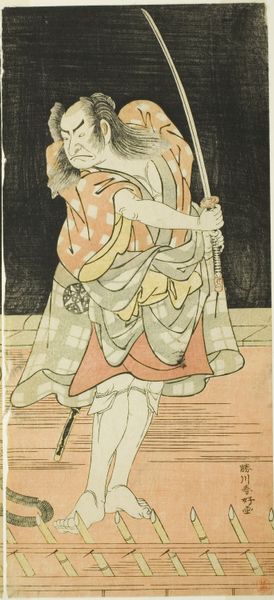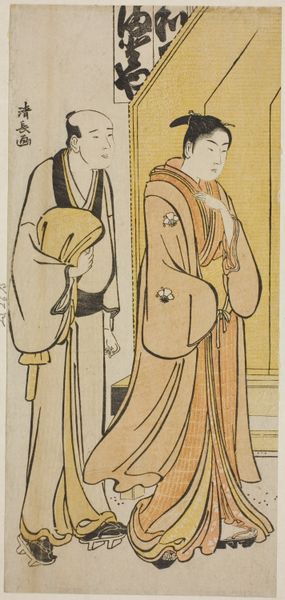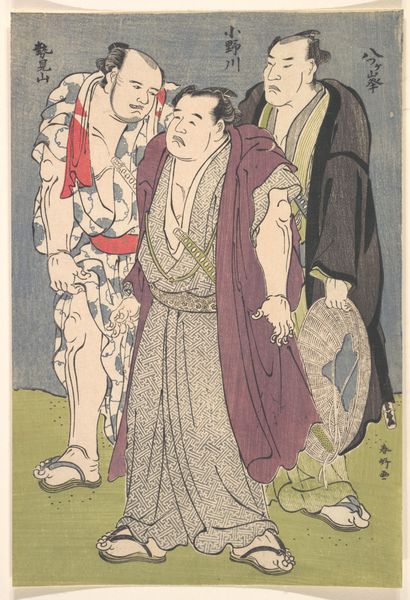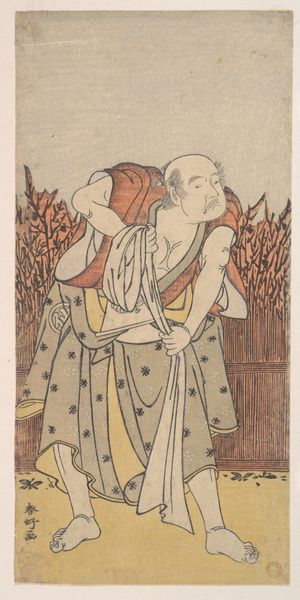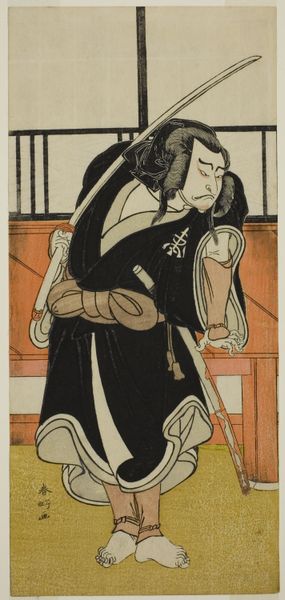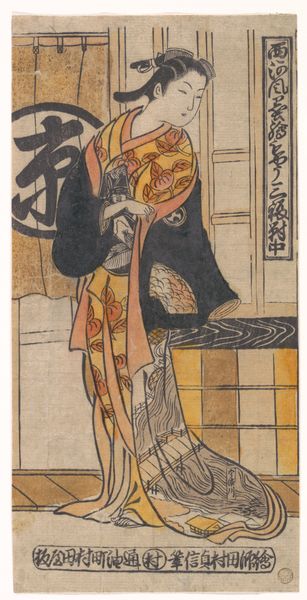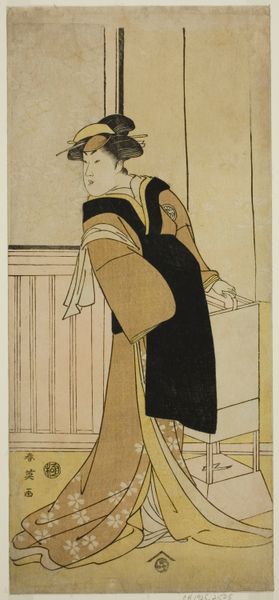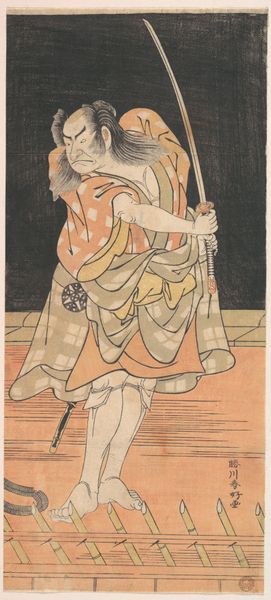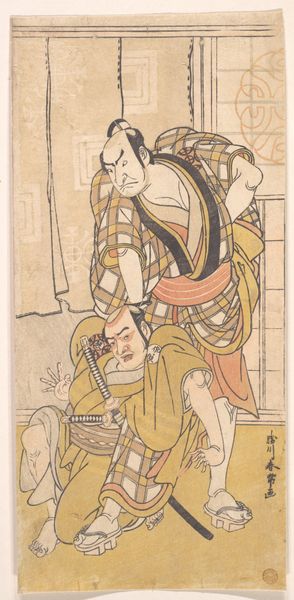
The Actor Asao Tamejuro I as Drunken Gotobei in the Play Yoshitsune Koshigoe Jo, Performed at the Ichimura Theater in the Ninth Month, 1790 c. 1790
0:00
0:00
#
toned paper
#
light pencil work
#
blue ink drawing
#
ink drawing
# print
#
asian-art
#
japan
#
cartoon sketch
#
personal sketchbook
#
ink drawing experimentation
#
coffee painting
#
sketchbook drawing
#
watercolour illustration
Dimensions: 30.7 × 13.8 cm (12 1/16 × 5 7/16 in.)
Copyright: Public Domain
Curator: Looking at Katsukawa Shunsen's print, "The Actor Asao Tamejuro I as Drunken Gotobei in the Play Yoshitsune Koshigoe Jo, Performed at the Ichimura Theater in the Ninth Month, 1790," one can't help but be drawn into the rich tapestry of Edo period theatre and its social commentary. Editor: He seems to be leaning rather heavily, it could be his character of a drunk, or maybe the type of paper that aged. Curator: Indeed. The bent posture and blurred, light pencil work give an immediacy. Now, remember, during this period, kabuki theatre wasn't just entertainment; it was a vibrant space where class dynamics and societal norms were often questioned. Shunsen captures this tension beautifully through his depiction of the actor. Editor: Yes, and there's a tactile element, too. The blue ink drawing and toned paper— likely mass produced prints from woodblocks --hint at the means by which these images were circulated and consumed by a broad public. These were commodities of a specific cultural industry. Curator: Precisely. Consider how gender roles played out both on stage and in the audience. The portrayal of a male actor embodying this particular role, within a culture of gendered expectations and performative expression, offers such nuanced entry point. I want to suggest, furthermore, an exploration into what a 'drunk' signified during that time. Editor: Absolutely. What kind of sake was drunk? How was it produced, bought, and shared? A focus on the materiality leads us to consider larger structures that underly culture during the 1790s. I almost want to read it alongside Marx. Curator: That is what the field is there for, isn't it? What does the creation of the print allow, and for whom? Editor: Definitely! It is this intertwining of representation and real conditions, what the 'worlding' that is enabled via art and image, of what an object 'does,' more than 'what' it 'is' Curator: Well, exploring the artist's intent can still allow other types of interpretations, where a certain politics of his figure is being shown Editor: True, without ignoring the labor practices or the social networks necessary for their production and exchange. Thank you, this will serve our visitors. Curator: Thank you. I, too, leave here with new avenues for inquiry.
Comments
No comments
Be the first to comment and join the conversation on the ultimate creative platform.
